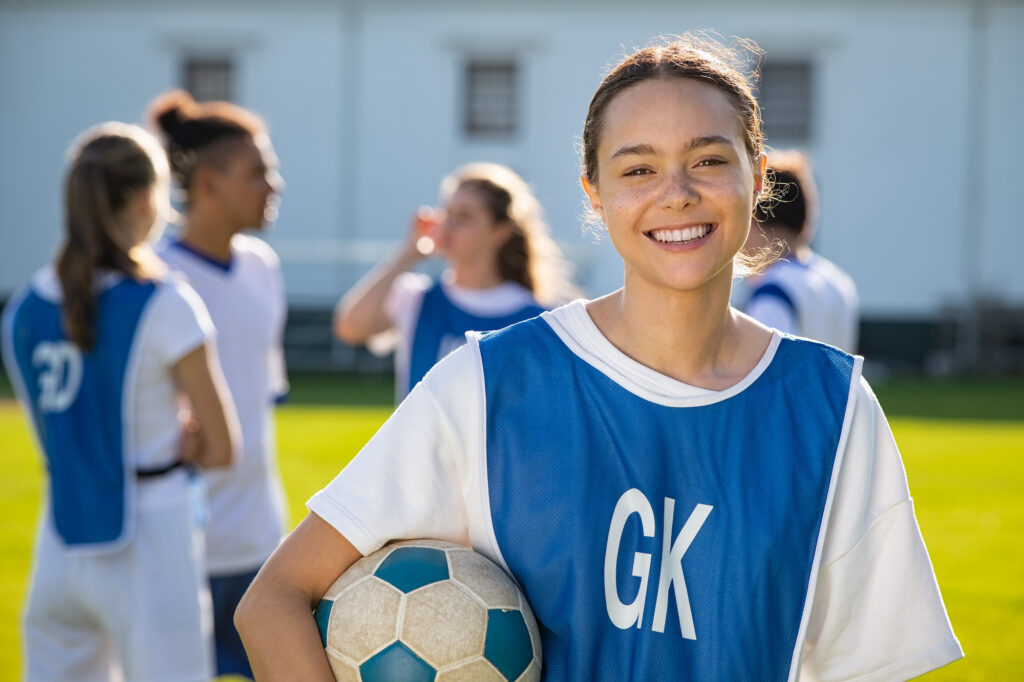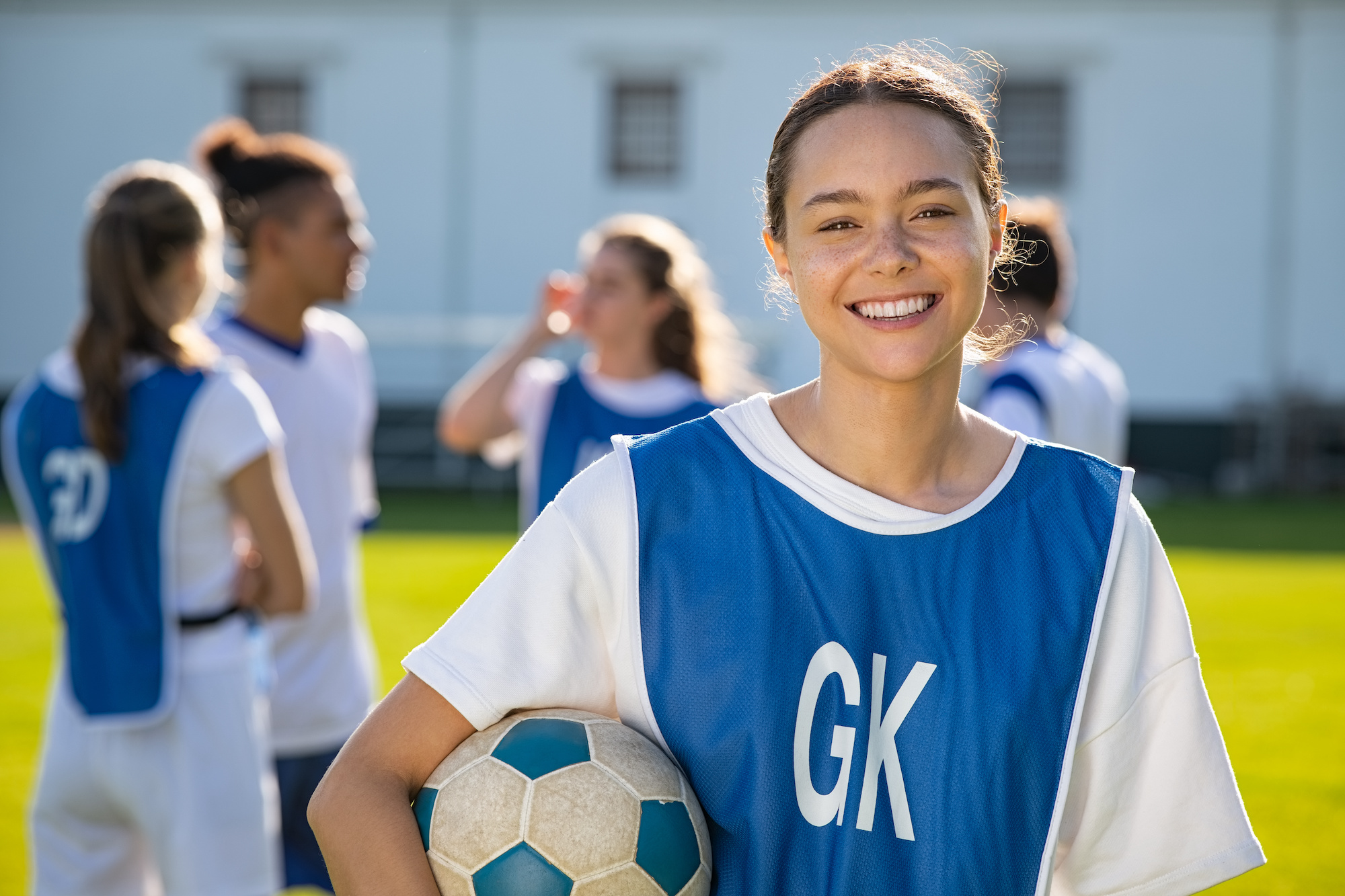How Physical Therapy Can Help Your Teen Dealing With Osgood-Schlatter Disease

Is your teenager complaining about knee pain? Are you concerned about the bump that seems to be forming on the shin bone? Your teenager may be dealing with Osgood-Schlatter disease. Despite the scary-sounding name, Osgood-Schlatter eventually goes away, and with physical therapy at Choice Therapy, our therapists can help you get better sooner than later.
Our bodies go through significant changes during the teen years, including our muscles, tendons, and bones. As our bones grow longer, the growth plates (i.e., the end of our bones where new bone tissue is made) are susceptible to injury from repetitive stress.
Osgood-Schlatter occurs where the tendon from the thigh muscles attaches to the top, front portion of the shin bone (tibia). This condition results from irritation due to the increased stress of running and jumping on the tendon’s insertion point (i.e., the tibial tubercle).
The good news is that at Choice Therapy, our physical therapists know how to effectively reduce any pain or inflammation your teen may experience and help them get back to doing what they love!
Request an appointment with one of our specialists today!
How to tell if your teen is dealing with Osgood-Schlatter
It can be difficult for any parent to figure out if their teen’s pain is serious or just a temporary annoyance that just needs a little ice to help them feel better. Fortunately, our physical therapists can guide you and help you address any musculoskeletal issues that require intervention.
Osgood-Schlatter disease is a condition that affects children (primarily teenagers) experiencing growth spurts. Kids who play sports or do activities where they run and jump are most at risk.
The most obvious symptom initially is pain. As the condition worsens, there is often inflammation where the patellar tendon attaches to the top of the shinbone, at the tibial tuberosity. For some teens, there may also be inflammation of the patellar tendon itself and limitations intolerance when the tendon stretches over the kneecap when the knee bends.
One of the most obvious signs that your child is dealing with Osgood-Schlatters is the painful lump that forms below the kneecap. For some kids, the bump is mild, and pain is the main characteristic, but for others, the bump is noticeably more prominent and typically exquisitely painful.
This bony growth is the body’s response to the stress of too much exercise or repetition of movements. The combination of bone growth due to maturity and the increased bone production when the body is overworked leads to the bump’s formation.
Like most overuse-type injuries, a combination of factors contributes to the severity of the condition. This is why it is so important to see a physical therapist. Our team will conduct a comprehensive assessment and identify all the factors contributing to your child’s condition.
What to expect in physical therapy sessions
At Choice Therapy, we will start with an injury evaluation and a biomechanical assessment to identify all the factors contributing to the injury. This will consist of a thorough history to understand more about your teen’s type of activities and the demands on the tendons and bones.
We will use this information to develop a comprehensive program that includes targeted manual techniques, taping, or any other appropriate pain relief technique for the individual. It is particularly important to remember that our tendons, joints, and bones can become irritated if they are asked to do more than they can do, especially during the teen years.
The key to a successful outcome is managing how much we stress the painful area. Doing too little can extend the recovery time, yet pushing too far too fast can lead to irritation and possibly re-injury. We will likely recommend an active rehabilitation program that gradually loads the tendon.
In rehabilitation, loading means the cumulative amount of exercise performed. Your therapist will alter repetitions, sets, resistance, duration, and speed to modulate the loading/stress on the knee. The goal of tendon rehabilitation is to gradually progress the exercises to challenge the tendon without irritating it further.
Targeted stretching is essential for optimal results. Restoring any lost motion will help prepare the tendon to tolerate stress through the entire joint range of motion. Mobility restrictions can lead to stress or compensations that affect the tendon’s tolerance to activity.
Stretching also helps increase blood flow and allows for the proper alignment of the fibers in the tendon itself. Tendon healing requires adequate blood flow and tissue alignment for good tissue mobility and strength.
The goal of therapy is to restore function and make sure your teen has all the tools they need to prevent any future episodes!
Request an appointment at Choice Therapy today!
Our physical therapists are experts at treating Osgood-Schlatters disease and other knee injuries. We have proven success with treating kids of all ages and skill levels.
Find a location convenient to you, and call today to set up an appointment with one of our specialists and let us help your child get through their teen years with one less thing to worry about!
Sources:

